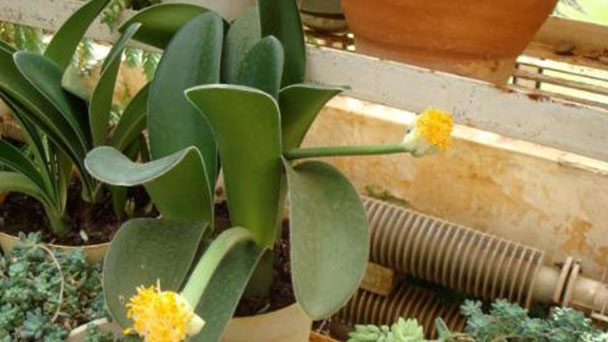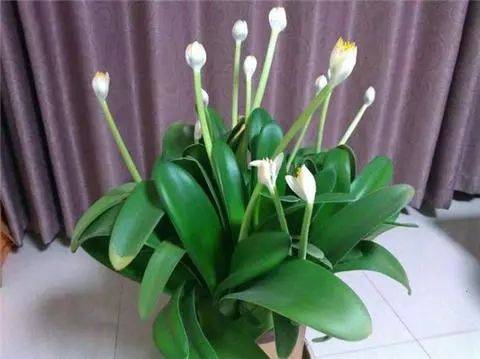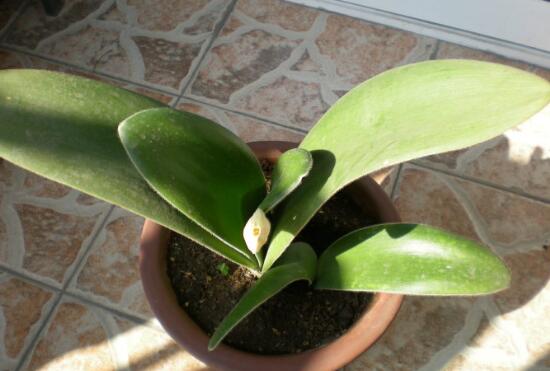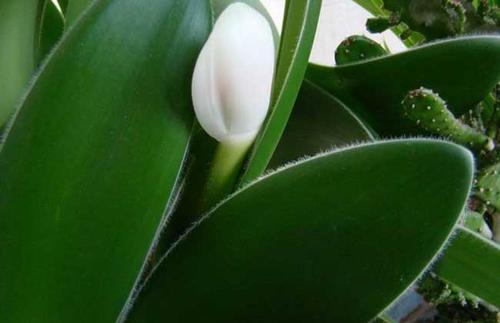Haemanthus Albiflos Profile
Written by Maggie
Dec 03 2021

Haemanthus albiflos is native to southern Africa and prefers warm, moist, and semi-cloudy environments, requiring slightly acidic sandy loam or peat soil.Its cold resistance is poor, and in the summer it should be half-shaded. In winter, the overwintering temperature should not be less than 5℃.
Haemanthus albiflos leaves are evergreen, elegantly positioned, and bloom in white clusters with yellow anthers at the top. Bright and striking, haemanthus albiflos is ideal for indoor potted plants.
Haemanthus Albiflos Picture

Haemanthus Albiflos Characteristics
Haemanthus albiflos is a perennial herb.Bulb globose, 4-7 cm in diam.Leaves are 3 or 4; The petiole is short, sheathed; The leaf blade is oblong, 15-30 cm long, with 6-8 longitudinal veins on each side of the main vein, and the transverse veinlets are densely arranged and oblique. Stems are erect, solid, slightly flattened, 30-90 cm high, first leaves withdrawn, pale green or eradicated; The umbel is with many flowers, densely arranged, 7 -- 15 cm in diam., with 1 involucral bract, involucral bracts 3 -- many; Flowers are white, slender; Perianth tube cylindric, 6-12 mm long; Perianth lobes are linear, approximately twice as long as perianth tube; Stamens are arising from perianth larynx, longer than perianth lobes or sometimes very long. Filaments are filamentous, anthers yellow smaller, oblong, t-shaped; The ovary is inferior, globose, 3 - loculed or reduced to 1 - loculed, style filiform, stigma unlobed or micro3-lobed. Berries globose or oblong, bright red; Seeds are globose, dark gray-brown. The flowering season is summer.
Haemanthus Albiflos Growth Environment
Haemanthus Albiflos prefers sunny, warm, humid, well-ventilated environments. It is drought-resistant, not cold-resistant, and grows at a temperature of 15-25℃, requiring a well-drained slightly acidic loam soil.
The substrate for Haemanthus albiflos cultivation can be mixed with peat, leaf rot and river sand. In the growing season, apply the stale cake fertilizer once a month, and then add phosphate fertilizer appropriately.In cold areas, it is necessary to move to the greenhouse for conservation and ensure the minimum temperature is 5℃, otherwise it is vulnerable to freezing damage.
Haemanthus Albiflos Distribution
Haemanthus Albiflos is native to tropical Africa and cultivated in China.
Haemanthus Albiflos Pest Control

Common leaf spot damage during Haemanthus albiflos growth period was prevented by a 50% tobutin wettable powder 700 times liquid spray.
Haemanthus Albiflos Main Value
watch
Haemanthus albiflos has both considerable flowers and leaves. It blooms in early winter in Shanghai, China, with a flowering period of up to 2 months. Its flowers and leaves are delicate, beautiful and graceful, and the plant is evergreen, making it ideal for indoor pot appreciation.
Haemanthus albiflos has fleshy, evergreen leaves with tongue tips and small villi resembling tiger ears. Haemanthus Albiflos is one of the most prominent flowers in the home decor. The overall height is not high, and leaves are mainly appreciated.It can be put in the place such as sitting room, study, balcony, green tonal very pure and fresh, gives a person the sense that a kind returns to nature, makes the person body and mind cheerful.
medicinal
Haemanthus albiflos has the effect of detoxifying and reducing swelling and is a good medicine in Traditional Chinese medicine. It has a good detoxification effect on a variety of toxins. For more specific toxins, Haemanthus albiflos can also be effective in treating them. In case of accidental poisoning, take adequate amounts of Haemanthus Albiflos, mash them directly and apply to the affected area.
health
Haemanthus Albiflos absorbs carbon dioxide during the day and produces oxygen, which can purify indoor air. It is suitable for living room, study, balcony and other places, but releases carbon dioxide at night. It is not suitable for the bedroom, which is a place for people to rest and has a great impact on people's health. Especially in the northern winter, the doors and windows are closed, the heat is warm, the air is not smooth, coupled with the carbon dioxide released by Haemanthus albiflos at night, which is very bad for people's health.

Latest Updated
- Benefits of Bugleweed - 7 Science-backed Health Benefits
- Bugleweed Dangers & Side Effects - Is It Poisonous?
- How to Plant Evergreen Trees - What You Should Know
- When to Plant Evergreens - Grow Guide for Evergreen Trees
- 12 Wonderful Evergreen Shrubs for Your Garden
- 12 Popular Evergreen Plants with Pictures for Beginners
- When And How To Prune A Lilac Bush Like a Pro
- How to Grow & Care for Lilac Vine (Hardenbergia Violacea)
- Japanese Lilac Tree (Syringa Reticulata) Care & Propagation Guide
- Shumard Oak Pros and Cons - What to Know
Popular Articles
- Winter maintenance of Antirrhinum Majus
- How to Grow Terminalia Mantaly Tree
- How to Grow and Care for Crossostephium Chinense
- How to grow Antirrhinum Majus in spring
- Peristeria Elata (Dove Orchid) Profile: Info & Care Guide
- Underwatered Snake Plant (Sansevieria Trifasciata) - Signs And How To Fix
- How to Care for Brazilian Jasmine Plant (Mandevilla Sanderi)
- How to Grow & Care for Graptopetalum Purple Delight in Summer
- Rosa Chinensis (China Rose): Plant Growing & Care Tips
- How to Care for Baby Sun Rose (Aptenia Cordifolia)